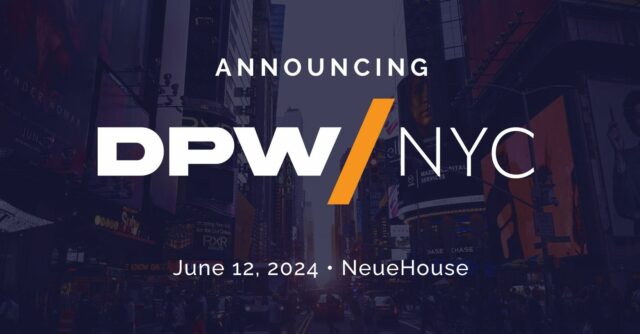Tell us about your background and your career journey prior to S&S…
It started off with telco recruitment, working with some of the big ISP brands in the UK when there was that Internet Service Provider explosion, so I worked with the EZ net board to help them build their capability to try and make a mark in the UK. Of course it did quite successfully, and then Sky bought them out and then that turned into a big integration point programme which I resourced. Fundamentally at the heart of it was always speaking to boards, finding opportunities and problems and then connecting groups of people to solve those problems but with a recruitment angle on it.
Where did S&S come into the equation?
I was privileged to be headhunted to come over and work for a guy called Simon Fosse. There were four of us around the table. We wanted to do something fundamentally different in the market. We are a collection of senior knowledge workers and senior recruitment. So over a sort of six and a half year period, I grew that particular business, from scratch to an eight figure revenue business and we did really well. We work with boards and help people like Burberry become a digital first organisation, working alongside their CIO and putting in different project teams to deliver their digital programmes. And I love it. That’s exactly what I love doing and I think towards the back end of that
I started to fall out of love with traditional recruitment. I think that the actual model is getting disintermediated. What I was seeing in the market is what not a lot of people are talking about right now, which is this jobs revolution at the senior end of the market.
So a lot of people talk about the gig economy, and the sort of low end of the gig economy. But there’s absolutely this explosion around this expert revolution, this interim revolution of executives and senior knowledge workers leaving the permanent world to trade via their IP and value and building a service around that and becoming independent experts. So I kind of saw a few things intersecting at once, which was this interim revolution of senior knowledge workers becoming independent experts coming into the market. That’s how I’ve always been successful in my career serving that market.
The other thing was management consulting fatigue. So if you look at the traditional route to getting consulting advisory and then delivery of big programmes or big digital transformation probes, people traditionally went for the Big Four or the Big 10. And I think fundamentally now what we’re finding is a lot of people are starting to back off from using those channels for a number of reasons. So I kind of had this idea in my mind of what if I brought all of the experts I’ve used over the years into a community based approach to consulting and working with clients. Could it be a challenger service provider to some of the Big Four, the Big 10, larger consulting providers? So it really came from that spirit of uniting my network already into a services business to fundamentally help organisations transform. I’m pleased to say we’re just out of year three coming into year four. We’ve gone from strength to strength and we’ve really hit a tone in the market
What has changed over the course of your career?
Earlier in my career, transformation was synonymous with a multi-year Big Bang approach. I think the thing that we see around the way that transformation is being perceived is that there’s a lot of fatigue about that kind of word these days. When I go into these big businesses, if you say the word transformation, you can just see the fatigue on their face, or they’ve been through so many different transformations.
I think the word transformation is just overused. People might be putting the data centre into a cloud, they call it transformation. They might be doing a desktop refresh, they’re calling a transformation. I think the word transformation probably needs to be retired. But back in the decade of 2000 to 2010 transformations were big, multi-year things where benefits were not derived until three or four years down the line. I saw a lot of businesses that would spend and invest so much money in those big initiatives for it not to work or to not deliver the intended benefits to the board. I think when you look at the decade that came after the first decade of this century, you only need to see the gradual shift in pace. One is the aggressive shift in customer preferences, the unforgiving landscape in business now. If you look at the shift from the first decade, if you said that Toys R Us or Blockbuster would be obsolete in the last decade, you’d have probably laughed. You’d have probably laughed if we said Thomas Cook would be obsolete at the end of the last decade. The other high profile casualty Carillion from a b2b perspective and more recently with Mothercare. I think the trend was absolutely more long term programmes and long term transformation.
S&S was formed based on this shift, where businesses need to break that down into manageable chunks to keep the business invigorated and aligned and onpoint, where you can actually deliver the sum of a transformation every 90 days by incremental bits of value, that give business benefit to the board, the customers, the internal stakeholders, etc.
The other shift focuses on talent and the changing work in preferences. There was this big thing to build huge permanent workforces. I don’t get that anymore. I just don’t get why you want to own your talent. Is the word permanent? Should that be retired? What does permanent actually mean? I think the new generation coming through doesn’t want to be permanent. Millennials don’t want to be permanent. The generation after that are now starting to want to become executive gigs or you know, experts where they want to have a fractional relationship with their work, they want to do gigs and fluid gigs and go into organisations and not get caught up with the company political drag and just trade value and do the stuff that they love. So they’re starting to design work around what they love doing. Baby boomers are just realising that I don’t want to retire. I think this changing workforce, this changing opportunity, this changing landscape that’s going around from the industrial way of working to the future of work is really going to accelerate this decade.
When I started, no one really designed anything around the customer. Now the companies that are winning are designing everything around the customer. You hear of great examples like giffgaff using the power of the crowd to get iterations and feedback on their products and services. So using the network effect to enhance and build their products and services right in the sweet spot of what the customer wants.
When I designed S&S I resigned from my former company and resigned as a board director. I spent three months interviewing my executive network, just asking about the current state of affairs and looking to get a capability. What do you like? What don’t you like? What frustrates you? If you had a magic wand, what would be the ideal solution? When I launched the business, the first products programme in a box that we were bringing to market was programme management in a box where we come and deliver the outcome – and we tested it first. My network said they didn’t really see themselves on that path – a commodity. I got the feedback, tweaked it and then came back with ‘teams as a service’. Teams have interim experts designed around an outcome or a problem. So it’s a mission based team to be deployed into an organisation to help them have an innovation capability. Help them have an incumbent change capability, so they can constantly reinvent themselves, turn around a failing programme, align the board, etc.
How does anyone go about defining digital transformation?
Transformation again, is synonymous with trying to transform a legacy laden organisation. So it’s an organisation that probably on the whole was born in the last century. So they’re geared for the Industrial Revolution. They’ve got higher hierarchies. They’ve got an obscene amount of technical debt, they’ve got a vendor lock in with some of the big guys and the big software packages. They’ve got legacy people skills and people in roles that might have been there for a bit too long and legacy leadership and on the whole that causes a lot of ambiguity and confusion. They’re trying to transform soup to nuts in an organisation born in the last century and decentralise it to an organisation that’s fit for purpose or designed around products and services with business agility in the core. This is incredibly hard. Some of the traditional consultancies will go in and sell you a playbook that might work in one of your competitors. But when it’s actually shoved into organisation it will not work because you’ve got cultural nuances and other nuances that are just difficult to decipher unless you’re in there and you’re trying to really get to the bottom of what’s going on.
So invariably, what we see is the older ways of consulting have not solved this problem. Because if they had done, we wouldn’t be having all these companies that are starting to die, or starting to have consecutive years of declining revenues.
Problem number one in organisations is often that the boards are under so much pressure, they’ve got so much operational drag on their time. They might have city pressures. They’ve got issues going on in their business. They’ve got failures, they’ve got burning platforms and they’ve got people issues with miscommunications going on and people leaving people joining. I could go on and, and that’s actually really hard for that level of executive to actually get some time to think about where our business should go.
We start off with getting executive groups to stop and we bring them into our workshop environment. What does the future look like for your business? Do you have the right strategy? What does the customer of your future look like? Where would you like your company to be in three or five years? What does it look like? What does it feel like? How are your customers? How are your people feeling? How do you constantly iterate in accordance to market conditions? What kind of talent have you got? What is the baggage in the old company that you never want to have again?
It’s a concept of reverse engin eering the future rather than trying to fix the past? What I find with transformations these days is that a lot of them are trying to fix the past before they can even get to the future and by then they’ve lost two or three or four years and they’ve actually got no value into the business and they’ve wasted a lot of money. The organisation is completely fatigued with transformation and change. They don’t actually have a muscle in the business of how to change after they’ve done it, because they’ve been heavily reliant on the management consulting drug. We try to turn all of that stuff upside down and actually get them to think. So if there is a discovery process, we have our IP of how we do it. At the end, there is a point of view, a solution, a roadmap and a way.
It’s getting them to come together and go through that process. They’ve all got equity in that process and they all feel like it’s their idea, because eventually, invariably it is and we’re adding points of views. We’re adding expertise and we’re facilitating. We also find that’s what actually gets the board and the leadership teams aligned. If I think about some of the problems I see in transformation, digital transformation, business transformation, it might not be the right strategy, the board might not be aligned. We’ve seen it before we get sponsored to go in somewhere and then the sponsorship dies. So the business doesn’t follow through on it. But if you get the board aligned with the right strategy for the right transformation, get them ready for change, execute outcomes every 90 days – then everyone in the business starts to get confidence that it’s moving in the right direction and can visualise the work around the organisation.
Long gone are the days where you’ve got racks and racks of people where no one’s talking to each other. As a recruiter, you could imagine that I’ve been into thousands and thousands of businesses and most people are dead behind the eyes in the middle of the company. They’re just coming in doing their nine to five, tapping their keyboard, doing a bit of work, finding a bit of politics and falling out with someone. It’s not all doom and gloom on the whole in my experience but there’s a lot of bloated organisations where it is like that. There’s too many people doing too many things. They’re not talking to each other, and then they’re not collaborating. We find if you visualise the work at board and leadership level, and bring the work to the people, and carbonise everything so you’ve got a flow of work going through and there’s collaboration and cross functional teaming that’s delivering value to a customer. Then you have a cross functional team delivering value to an internal customer, cross functional teaming, where the execs and the leaders are working with the staff, and you really get the whole organisation aligned to get into their intended state.
I have business coaches, and I’ve had life coaches before, so I’m probably the product of coaching. I made a decision when I was 28 to just try and be someone of growth and be an individual who has a growth mindset and I don’t know all the answers and I need help. I need to be on the hook sometimes for improvement and to sustain some of the gains that I’ve made. So why don’t we have that in companies? We’re starting to see now where we’ll put a board coach alongside the board. We have enterprise coaches, we put across the leadership teams can bang coaches and agile coaches and flow coaches working with the organisation. So it’s that kind of coaching concept that we see in the individual market coming into the business world and I’m a massive advocate of it.
It starts to bring in the concept of continuous improvement and continuous reinvention. And knowing that your last 90 days isn’t gonna be as good as your next 90 days, in terms of you as an individual or you as the business and in terms of how close you are to the customer in terms of the health of the organisation.











